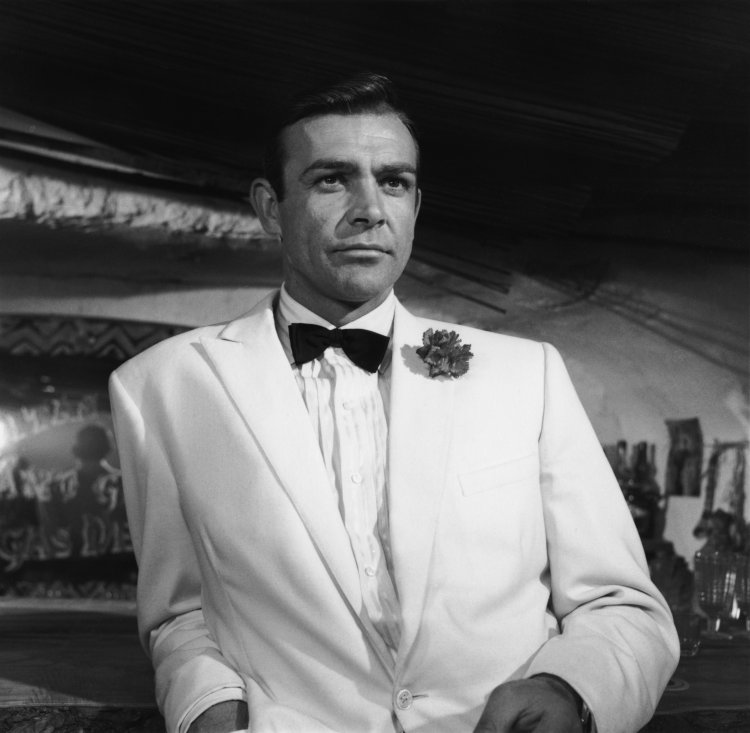007: The Original James Bond is dead
Sean Connery, the Original James Bond Dies at 90

Sean Connery, the Scottish actor who was catapulted to superstar status after playing the suave but steely secret agent James Bond, died. He was 90.
The actor starred as 007 in films such as “Dr. No” and “Thunderball” before carving out a niche later in life playing grizzled older men, including Indiana Jones’s father in “Indiana Jones and the Last Crusade” and a Russian submarine commander in “The Hunt for Red October.”
But it was his role as the secret agent with the license to kill that turned Mr. Connery into an international superstar, tapping into the changing social and sexual mores of the era that enabled him to be seen as much an object of lust for the audience as the lovers he pursued on screen.
Thomas Sean Connery was born on Aug. 25, 1930, in Edinburgh. His father, Joseph Connery, was the son of Irish immigrants and worked in a rubber factory. His mother, Euphemia McBain McLean, was a cleaner.
He delivered milk in his younger years in the streets around his home, which included some of Scotland’s roughest slums and where he was known as “Big Tam.”
Mr. Connery briefly joined the British navy but was discharged for having a duodenal ulcer. He returned to Edinburgh, where he worked on a number of odd jobs, including truck driver, lifeguard, laborer and coffin polisher. He also competed in a Mr. Universe bodybuilding contest and found work as a part-time artist’s model at the Edinburgh College of Art.
In 1951, Mr. Connery found work as a scene shifter at Edinburgh’s King’s Theatre, a role that piqued his interest in acting. A couple of years later, he landed a role in a touring production of “South Pacific” that opened doors to supporting roles in television and film.
But his big break came when he was cast as British secret agent James Bond. 007 creator Ian Fleming initially thought Mr. Connery was a poor fit for the role, but he changed his mind after watching “Dr. No,” and in subsequent Bond adventures he gave the character a partly Scottish ancestry.
Mr. Connery, who was 32 years old when “Dr. No” was released in 1962, went on to star in the first five Bond films, before returning for “Diamonds Are Forever” in 1971.
Despite his success, he grew to resent the role. “If you were his friend in these early days, you didn’t raise the subject of Bond,” actor Michael Caine recalled.
His portrayal of Bond was considered misogynistic by some, and in 1965 Mr. Connery gave an interview to Playboy magazine in which he condoned violence against women, saying “an openhanded slap is justified, if all other alternatives fail and there has been plenty of warning.”
READ ALSO:
Shatta Wale sheds tears over fan
Still, the international success of the Bond films allowed Mr. Connery to star in other films where he could demonstrate his range, including in acclaimed roles in Alfred Hitchcock’s “Marnie” and Sidney Lumet’s “The Hill.” He made what he regarded as his best film, John Huston’s “The Man Who Would Be King,” which co-starred Mr. Caine and was based on a Rudyard Kipling story about two British adventurers in British India.
He played Bond for a seventh and final time in “Never Say Never Again” in 1983, a film that falls outside of the official James Bond canon because it wasn’t produced by Eon Productions, the company behind the other Bond films.
Mr. Connery’s star power didn’t wane as he entered middle age. In 1988, he won the Academy Award for best supporting actor for his portrayal of a hard-bitten Irish-American cop fighting Al Capone in Brian De Palma’s “The Untouchables.” A year later, People Magazine awarded the then 59-year-old with the title “Sexiest Man Alive.”
He retired from acting after playing Allan Quatermain in “The League of Extraordinary Gentlemen,” but he was coaxed out of retirement to voice the role of Sir Billi in the animated feature “Guardian of the Highlands” in 2012.
Mr. Connery had long supported Scottish independence. He donated money to the Scottish National Party until 2001 from his low-tax home in the Bahamas, when new U.K. laws prohibited the overseas funding of political parties. His political views didn’t prevent him from accepting a knighthood from Queen Elizabeth at a ceremony at Holyrood Palace in Edinburgh in 2000.
The leader of Scotland’s government, First Minister Nicola Sturgeon, paid tribute to his influence in normalizing the idea of independence. “Sean was a lifelong advocate of an independent Scotland and those of us who share that belief owe him a great debt of gratitude,” she wrote on Twitter shortly after his death was announced.
Later in his life he suffered from ill health, but Mr. Connery was photographed enjoying tennis matches at the U.S. Open and strolling around New York, sometimes with the help of a caregiver. He died at his home in the Bahamas.
“We are all working at understanding this huge event as it only happened so recently, even though my dad has been unwell for some time,” his son, Jason Connery, told the British Broadcasting Corporation. “A sad day for all who knew and loved my dad and a sad loss for all people around the world who enjoyed the wonderful gift he had as an actor.”
Scotland was rarely far from Mr. Connery’s mind, though, and he was keenly aware of how far he had come since his early days in Fountainbridge.
“When I took a taxi during a recent Edinburgh Film Festival, the cabbie was amazed that I could put a name to every street we passed,” Mr. Connery recalled in 2009. “‘How come?’ he asked. ‘As a boy, I used to deliver milk round here,’ I said. ‘So what do you do now?’ That was rather harder to answer.”
He is survived by his second wife, Micheline, and his son, also an actor, from his first marriage.






































